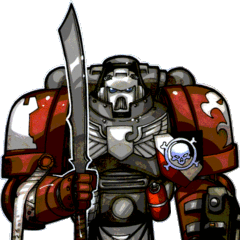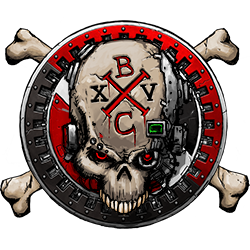Search the Community
Showing results for tags 'book review'.
-

Tabletop Wargames: A Designers' & Writers' Handbook
Brother Tyler posted a topic in + AMICUS AEDES +
By Dr. John Lambshead, Rick Priestley Imprint: Pen & Sword Military Pages: 157 ISBN: 9781783831487 Published: 5th September 2016 I recently read this book and found it quite informative. It's not a step-by-step precis on how to develop and publish a wargame. Rather, it's a collection of things to consider when developing and writing a tabletop miniatures wargame. The book covers all tabletop miniatures wargames, with a decided focus on larger wargames (those that use formations, which includes Warhammer 40,000). Despite that focus, "skirmish" wargames (which the book identifies as those where the individual model, rather than the unit, is the basis of play) are addressed sufficiently. While Warhammer 40,000 might be considered a "skirmish" game in the level of conflict it represents, the basis of play is the unit, so it doesn't fall into this book's scope of "skirmish" games. However, Necromunda, Kill Team, Shadow War: Armageddon, and Gorkamorka do fall into the "skirmish" category; and such squad/unit/warband level "skirmish" games are experiencing a renaissance, especially with Osprey Games' wide range of such games. Notably, aerial and naval combat is included in the "skirmish" games (the explanation makes it clear that this is a pretty fair conclusion). Aerial and naval combat includes fantasy and science fiction equivalents (such as the now defunct Aeronautica Imperialis (aerial) and Battlefleet Gothic (naval). While the book isn't about the whole range of wargames (which includes abstracts, chit 'n' hex, boardgames, etc.), other types of wargames are addressed where appropriate to the advice being given (e.g., Chess is mentioned often, as are games such as Risk, Squad Leader, etc.). While the advice in the book might be applied to the full range of (war)games, it is most definitely focused on the tabletop miniatures wargames into which category Warhammer 40,000, Necromunda, etc. belong. For most of us, the book provides significant insight into the process of creating a wargame, why some decisions may have been made by the developer/author, and things we might consider whenever we either criticize a game/designers or try our hand at creating homegrown rules for a game. Many of the issues that are discussed on a recurring basis here at the B&C and elsewhere on the Internet are addressed in this book. These include subjects such as simulation vs. game (a painful, never-ending debate), simulation vs. playability (related to the previous), friendly vs. competitive, playtesting, the value of points values, codex creep, etc. The "answers" to these issues as provided in the book are clearly subjective, they are the authors' opinions. However, when you consider the fact that Rick Priestley was one of the principal developers of the Warhammer system, some of our Internet "expert" opinions might be re-evaluated. While Warhammer 40,000 8th Edition wasn't developed by Mr. Priestley, it is clearly an evolution of the system he created. I received my copy two days ago, promptly started reading it, and finished it last night. This book isn't necessarily for all wargames hobbyists, but those of you with more than a passing interest in the design side of the hobby, or who really really want a glimpse inside the head of a designer, might find this book to be a good addition to your library. Personally, I'm very pleased with it. The- 4 replies
-
- Rick Priestley
- John Lambshead
-
(and 2 more)
Tagged with:

